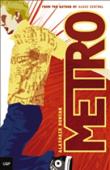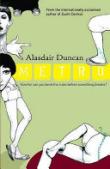AustLit
The material on this page is available to AustLit subscribers. If you are a subscriber or are from a subscribing organisation, please log in to gain full access. To explore options for subscribing to this unique teaching, research, and publishing resource for Australian culture and storytelling, please contact us or find out more.
Latest Issues
AbstractHistoryArchive Description
'Liam Kelly is the very model of the modern male - boys want to be him, girls want to be with him. He and his group of loyal mates spend their days driving around town, drinking beer and very occasionally going to lectures. His good looks compensate, everyone agrees, for his superior attitude and private-school arrogance. Liam and his girlfriend Sara seem to be the perfect couple, but when she leaves for a European trip without him, the facade begins to crumble. He sees six months of freedom ahead, unaware that the consequences of his bad-boy behaviour will threaten the image he has so carefully created. Metro is a satirical tale of morality, masculinity and money from the internationally acclaimed author of Sushi Central.' (Backcover)
Notes
-
Dedication: For Chad
Publication Details of Only Known VersionEarliest 2 Known Versions of
Works about this Work
-
'When Everything Old is New Again' : Class, Consumerism and Masculinity in Alasdair Duncan's Metro
2009
single work
criticism
— Appears in: Journal of Australian Studies , December vol. 33 no. 4 2009; (p. 431-443) 'Alasdair Duncan's narrative Metro, set in Brisbane in the early twenty-first century, focuses on Liam, an unapologetically self-styled white 'upper middle-class brat' whose sense of place and identity is firmly mapped by spatial and economic co-ordinates. This article considers the linkages between spatiality and identity in Duncan's narrative, as well as the ways in which traditional, hegemonic (heterosexual) forms of masculinity are re-invigorated in the enactment of an upper middle-class script of success, privilege and consumerism. It argues that the safeguarding of these hegemonic forms of masculine identity involves strategies of spatial and bodily expression underpinned by conspicuous consumption, relegating other forms of sexual identity to an exploitable periphery. (p. 431) -
Untitled
2007
single work
review
— Appears in: Australian Book Review , April no. 290 2007; (p. 62)
— Review of Metro 2006 single work novel -
Metro Sexual
2006
single work
review
— Appears in: Brisbane News , 26 July - 1 August no. 597 2006; (p. 25)
— Review of Metro 2006 single work novel -
Skim
2006
single work
review
— Appears in: The Bulletin , 19 September vol. 124 no. 6538 2006; (p. 76)
— Review of Monica Bloom 2006 single work novel ; Metro 2006 single work novel -
A Creepy World of Sex, Drugs and Hard Hearts
2006
single work
review
— Appears in: The Sydney Morning Herald , 9-10 September 2006; (p. 30-31)
— Review of Metro 2006 single work novel
-
Fiction
2006
single work
review
— Appears in: The Age , 12 August 2006; (p. 25)
— Review of Metro 2006 single work novel ; Inventing Beatrice 2006 single work novel ; The Messenger 2002 single work novel -
Metro Sexual Central
2006
single work
review
— Appears in: The Courier-Mail , 12 - 13 August 2006; (p. 18)
— Review of Metro 2006 single work novel ; The Dark Part of Me 2006 single work novel -
When It's Down to Sex, Literary Lovers Come Good
2006
single work
review
— Appears in: The Australian Literary Review , September vol. 1 no. 1 2006; (p. 11)
— Review of Listen 2006 single work novel ; Metro 2006 single work novel ; Silent Parts 2006 single work novel ; The Long Road of the Junkmailer 2006 single work novel -
A Creepy World of Sex, Drugs and Hard Hearts
2006
single work
review
— Appears in: The Sydney Morning Herald , 9-10 September 2006; (p. 30-31)
— Review of Metro 2006 single work novel -
Skim
2006
single work
review
— Appears in: The Bulletin , 19 September vol. 124 no. 6538 2006; (p. 76)
— Review of Monica Bloom 2006 single work novel ; Metro 2006 single work novel -
'When Everything Old is New Again' : Class, Consumerism and Masculinity in Alasdair Duncan's Metro
2009
single work
criticism
— Appears in: Journal of Australian Studies , December vol. 33 no. 4 2009; (p. 431-443) 'Alasdair Duncan's narrative Metro, set in Brisbane in the early twenty-first century, focuses on Liam, an unapologetically self-styled white 'upper middle-class brat' whose sense of place and identity is firmly mapped by spatial and economic co-ordinates. This article considers the linkages between spatiality and identity in Duncan's narrative, as well as the ways in which traditional, hegemonic (heterosexual) forms of masculinity are re-invigorated in the enactment of an upper middle-class script of success, privilege and consumerism. It argues that the safeguarding of these hegemonic forms of masculine identity involves strategies of spatial and bodily expression underpinned by conspicuous consumption, relegating other forms of sexual identity to an exploitable periphery. (p. 431)
Last amended 14 Jun 2017 10:29:03
Settings:
- Brisbane, Queensland,
Export this record






